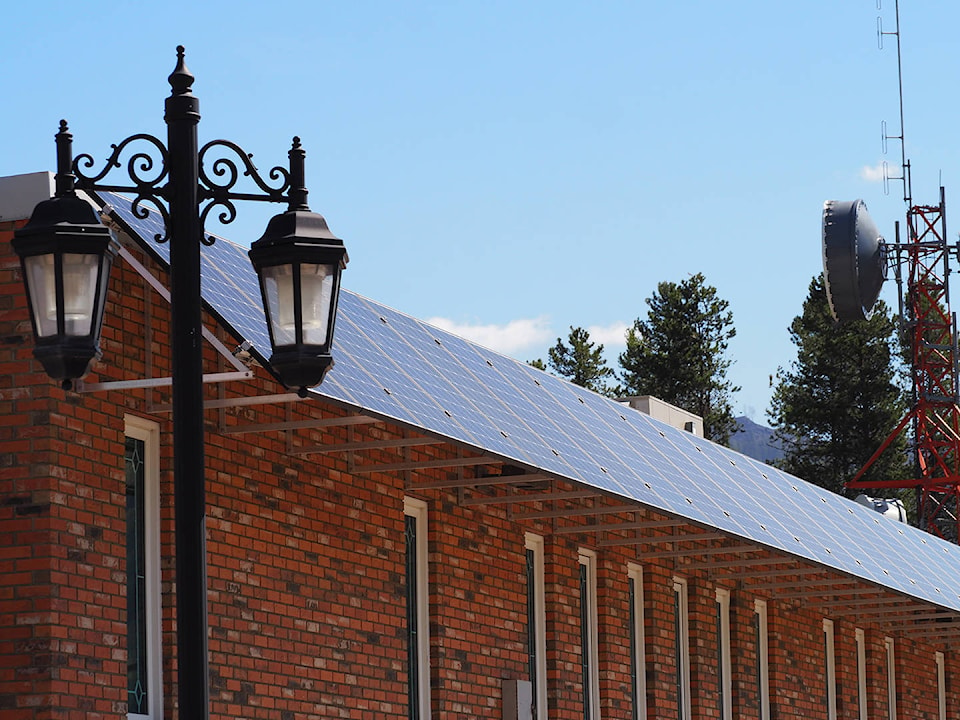The mining town of Sparwood has successfully harnessed the sun’s energy to help power its town hall and recreational centre.
At its main office on Spruce Avenue, the District of Sparwood is on track to meet its target of 900 kilowatt hours (kWh) of energy per month – the same amount used by the average household – after switching to the renewable energy source last year.
Forty-four solar panels were installed at the office and Sparwood Leisure Centre about a year ago, and were operational by June and August, respectively.
The photovoltaic (PV) systems came at a cost of $50,000, which was evenly split between the District and Clean Energy Canada’s Solar Now Program.
District of Sparwood Manager of Planning Nelson Wight said the town hall system was sized to meet the average household use of electricity.
“We don’t quite have a year of data, but it is looking like we will hit that target or come very close,” he said.
“In terms of production, we have seen some results that were quite unexpected.
“As an example, we were anticipating very little energy production in winter yet saw some surprisingly big days in February where we were generating 80 per cent of a typical day in July.”
Wight said the District was driven to install solar to improve its “energy literacy”.
“We mine coal here for the global market of metallurgical coal, we heat our homes and fuel our vehicles mostly with products from the fossil fuel industry, and our electricity comes primarily from hydro-electric dams,” he said.
“Whether one believes that for the sake of the planet it’s a good idea for Canadians to reduce their greenhouse gas emissions from close to twice as much as the average among our fellow OECD (Organisation for Economic Co-operation and Development) countries or not, one cannot deny that we will eventually run out fossil fuels.
“Before that happens, we will need to solve our energy needs through alternative sources. Sparwood is uniquely positioned to take advantage of solar photovoltaic, because we have very high potential here.”
Solar is not a new concept for municipalities, many of which use small-scale solar PV for operating street signs or lights in park areas where there is no ability to connect to the grid.
But Sparwood is one of the first councils to install a large-scale system in the East Kootenay, with Elkford to follow suit when it builds a new, multimillion-dollar district office this year.
The District of Sparwood hopes to recover the capital cost in fewer than 10 years and generate savings over the remaining 15 years of the expected life of the panels.
“I hope that we will continue to learn more about the effectiveness of this form of alternative energy, understand its strengths and limitations, and share this information with our residents and neighbouring communities so they can benefit too,” said Wight.
